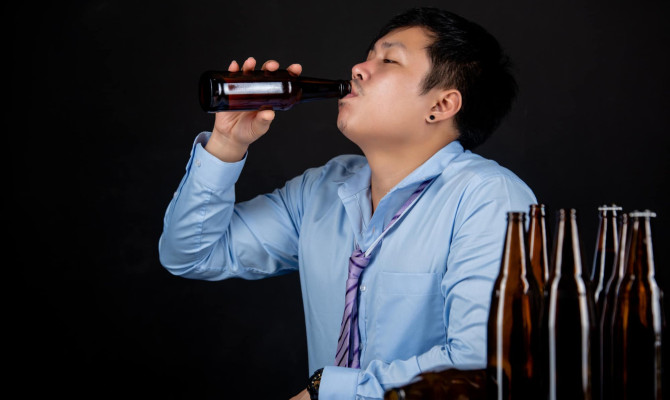How to deal with Autism?

- Autism
- 14 Aug 2023
Introduction
What is Autism?
Autism spectrum disorder is a neurological condition that affects a person’s ability to interact with others, behave, and process sensory information. The causes of this complicated illness, which has various effects on different people, are still a mystery. 1What is autism? | Researched based study from cdc.gov
Yet, there are several hypotheses on the genetic, environmental, and developmental causes of Autism.
Everything we need to know about dealing with and controlling Autism will be covered in this post.

Prevalence
Prevalence
According to the Centres for Disease Control and Prevention, autism is thought to affect 1 in 54 children in the United States (CDC). Autism affects approximately 5 million people in the US and is thought to affect boys four times more frequently than girls. With estimates of 1% to with 2% of the world’s population having ASD, the prevalence of Autism is rising. 2Prevalence| Researched based study from cdc.gov
Causes
What are the Causes?
- Autism has no single known cause, but research indicates that a variety of genetic, environmental, and developmental factors may play a role in its emergence.
- According to studies, ASD runs in families and some congenital abnormalities and variations may be linked to a higher chance of developing the disorder.
- Autism risk is also related to environmental variables like prenatal exposure to chemicals, infections, and maternal stress.
- Additionally, there is proof that several developmental factors, like changes in brain connectivity and development, may contribute to the emergence of Autism. 3Causes of autism | Researched based study from nih.gov
Signs
Signs and Symptoms
Early symptoms
The signs and symptoms can be seen as early as 12 to 18 months of age. Parents and caregivers may notice the following symbols-
- Lack of eye contact: Kids may shy away from or struggle with controlling eye contact.
- Language development is delayed in autistic children: By the time they turn one-year-old, they might not be able to gesture, talk, or say their first words.
- Repetitive behavior: Children with Autism may engage in repetitive behaviors like rocking, waving their hands or spinning things.
- Lack of interest in social relationships – Children with Autism may not be as interested in playing with others, exchanging stories, or asking others for comfort.
Communication and social challenges
- Recognizing social cues—they might not be able to interpret facial expressions, tone of speech, or body language.
- They can have trouble developing their social skills. to make friends, participate in social situations, or strike up conversations.
- Communicating; they are not permitted to have back-and-forth conversations or alternate speaking throughout a conversation.
- Using and understanding nonverbal clues, such as gestures and facial expressions, may be challenging for them.
Repetitive behavior and restricted interest in Autism
- Repetitive hand flapping or spinning of objects is one such repetitive movement or behaviour.
- Have trouble talking about other subjects because they are preoccupied with some issues or interests, like trains or dragons.
- React negatively to regular or ritual alterations and may grow agitated if a pattern is broken.
- Experiencing excessive sensitivity to specific noises, textures, or odors. 5symptoms of autism | Researched based study from nih.gov
Diagnosis
What are the Diagnostic methods?
Clinical assessment and evaluation
- Diagnosis is based on a thorough evaluation of an individual’s behavior and developmental history. The diagnostic process typically involves a comprehensive assessment by professionals, including a pediatrician, a psychologist, speech and language therapist.
Developmental monitoring
- It is an active, ongoing process that involves watching a child develop and encouraging discussions between parents and professionals concerning a child’s capabilities and skills.
- Monitoring your child’s development means observing their development and assessing whether they have attained the typical developmental milestones or skills in areas like playing, learning, speaking, and behaving. and moving that most kids do by a given age.
Screening
- The method of developmental screening involves using research-based surveys and checklists that compare your child to other children their age.
- There may be questions about speech, behavior, reasoning skills, emotions, and movement. a healthcare, community, or educational practitioner, such as a doctor, nurse, can conduct a developmental screening. You could be asked to fill out a questionnaire by your doctor as a part of the screening procedure. 11Diagnosis of autism| Researched based study from cdc.gov
Diagnostic criteria
- In 2013, the Diagnostic and Statistical Manual of Mental Disorders, 5th edition (DSM-5) redefined the criteria for ASD.
- According to DSM-5, a person must have chronic difficulties in social interaction and communication as well as constrained and recurrent patterns of behavior. Early in life must be when these symptoms first appear. and cause significant impairment in daily functioning. 7Diagnosis of autism | Researched based study from nih.gov
Types
What are the types of Autism Spectrum Disorder?
- Asperger’s condition- Now classified as part of the autism spectrum. Asperger’s, is distinguished by milder symptoms and no significant linguistic or cognitive delays.
- Autistic disorder- This diagnosis was used to describe people who fulfilled certain criteria for social interaction impairments in the Diagnostic and Statistical Manual of Mental Disorders (DSM-IV) prior to its revision.
- Asperger’s syndrome, autistic disorder, and other conditions that are related are all referred to as ASD, which is now the preferred term.
An evaluation of the person’s social, linguistic, and cognitive abilities may include standardized tests, developmental history, and observations of the person in various contexts. A medical examination is also necessary to rule out any underlying medical disorders that are the source of the symptoms.7types of autism | Researched based study from nih.gov
For people with ASD, early discovery and diagnosis are essential to better outcomes.
Treatment

What are the Treatment Strategies for Autism?
Behavioral modification
This consists of developing and implementing into practice techniques that can assist people in growing their social and communication skills, managing challenging behaviors, and improving the overall quality of life.
Applied Behavioral Analysis
- ABA is a therapy that teaches new skills and behaviors using positive reinforcement. Language, social, and self-help abilities are just a few specific skills and behaviors that ABA therapists help people with ASD to achieve. The therapist encourages the patient to use these abilities in daily life via positive reinforcement, such as prizes.
Discrete Trial Training(DTT)
- DTT teaches a desired behavior or response by providing step-by-step instructions. Lectures are simplified, and answers and actions that are chosen are rewarded. Unwanted responses and actions are rejected.
Pivotal response training(PRT)
- PRT occurs in the outdoors. It aims to improve “pivotal abilities” that will help in the acquisition of numerous other skills. An essential skill is the ability to initiate a conversation with someone. Developmental approaches are also promoted.
Speech and language therapy
- The most common developmental therapy for people with ASD is speech and language therapy. It helps patient to understand what they are saying and how to use their language more effectively. Verbal communication is used by some ASD patients. Other people may communicate by using signs, gestures, pictures, or an electronic product.
- The aim of occupational therapy is to help the patient live as independently as possible. Dressing, eating, bathing, and interacting with people are examples of skills. 11Treatment of autism | Researched based study from cdc.gov
Cognitive Behavioural Therapy (CBT)
- Aims to assist people in controlling and processing their thoughts, actions and behaviours. It can assist with problem-solving abilities development, anxiety and depression management, and learning coping mechanisms.
- It helps those with ASD to understand how their feelings, ideas, and behaviours are interconnected and to develop new, more flexible thought patterns and behavioural patterns.
- It is important to keep in mind that the effectiveness of the therapies may vary from person to person, and what works for one person could not work for another.
Medication
The use of medication can help relieve the symptoms of Autism in addition to behavioral therapy.
- Antipsychotics and antidepressants may be prescribed to help people with ASD manage their anxiety, depression, or violent behavior.
- Nonetheless, medication is frequently used with behavioral therapy as a supplementary treatment. 8treatment of autism| Researched based study from nationalautismcenter.org
Alternative and complementary therapies
The use of techniques, including acupuncture, herbal treatments, and dietary supplements. The effectiveness of these treatments for Some scientific research supports Autism, but this research is limited.
- Children with Autism can benefit from several educational and school-based interventions that have been proven successful. With the help of the PECS (Picture Exchange Communication System), nonverbal people can converse.
- Other approaches, like sensory integration therapy, social skills instruction, and parent training programs, can benefit people with Autism in addition to these interventions. 4treatment of autism | Researched based study from nih.gov
Although there is no known treatment for Autism, there is a number of treatments and therapies that may be beneficial for those who have the disease. It is essential to speak with a qualified healthcare professional in order to determine the best course of action.
Support
Supporting individuals with Autism
To enable people with Autism to have satisfying lives and realize their full potential, support is essential.
- Support from the family is crucial, especially in the early years of life. Supporting their autistic children by showing them love, care, and attention is vital for parents and other caregivers.
- Parent education programs are started to help parents of autistic children support their child’s learning and development. The National Autism Centre has identified several useful evidence-based parent training programs. 10Supporting person with autistim| Researched based study from nih.gov
Community-based assistance
- A crucial part of supporting people with Autism is community-based assistance. This strategy may offer chances to develop social skills, gain access to educational and recreational opportunities, and interact with people with comparable experiences.
- Organizations that support families, research, and advocate for people with Autism should be highlighted. 6Supporting person with autism | Researched based study from nih.gov
Workplace support
- For people with Autism to succeed, the workplace must support them. Many people with Autism have unique abilities and skills that might be useful to companies. Yet, they might also experience difficulties with their senses, social connection, and communication.
- Job coaches can assist people with Autism in developing job-related skills, navigating workplace social dynamics and coping with sensory difficulties. 9supporting person with autism| Researched based study from autismspeaks.org
Wellbeing and mental health
- For autistic people to be healthy and happy generally, supporting their mental health and wellness is crucial. Several people with Autism may deal with anxiety, despair, and ADHD. As a result, it’s vital to attend to their mental health issues and offer the proper care and assistance.
- Living with Autism Living with Autism can bring particular difficulties with day-to-day activities, social interactions, relationships, and adjusting to transitions and life changes. But, people with Autism can live happy, successful lives if given the correct tools and support.
Daily lifestyle
The most challenging task for people with Autism is managing their everyday routines. This can cover everything from planning and time management to processing sensory information and caring for oneself. Here are some pointers for managing daily life:
- Creating a routine – People with Autism can feel more at ease and less stressed by having a regular daily schedule. This schedule may include hours for getting up, eating, working, and enjoying leisure activities.
- Developing visual supports- As many autistic people learn visually, developing visual timetables, checklists, and reminders can aid in organization and time management.
- Sensory accommodations – People with Autism sometimes struggle with sensory processing problems. Wearing comfortable clothing, creating a sensory-friendly environment with dim lighting, and providing comfortable sitting are a few examples of modifications.
Social skills and relationships
- Autism patients may struggle to build and maintain relationships and social skills, but some ways can help.
- Participating in social skills groups or working with a therapist to build these skills.
- Role-playing, practicing group interactions through role-playing can boost the self-confidence of people with Autism.
- Discovering shared interests, taking part in activities that are in line with one’s interests might assist people with autism in connecting with others who have similar interests.
Transitioning through changes in life
- Making plans in advance can assist people with Autism in being ready and adjusting to changes. For the difference, this may involve visual schedules or checklists.
- Keeping consistency, maintaining a regular pattern in the middle of changes could provide one with security and comfort.
- Finding assistance, talking to a therapist or joining the support group can help people with Autism manage stress during transitions.
Autism can offer difficulties, but with the correct approaches and assistance, people with Autism can live happy, successful lives.
Research
Research advances
- Although the cause of ASD is not mainly known, there are contributing factors that can lead to its development. Scientists believe that Autism can be caused by genetic, environmental, and gut-biome factors.
- With the rising prevalence of Autism worldwide, researchers are working to identify the root cause, metabolism, and factors involved.
- Research has shown that early diagnosis and prevention can limit the growing number of Autism and lead to better outcomes.
- Screening tests and targeted treatments will then be made available for earlier detection.
Takeaway
Key takeaways
Due to the difficulties that people with ASD encounter in doing everyday tasks, Autism is a neurological illness that can interfere with daily activities. Nonetheless, there is a chance that the quality of life for ASD patients could improve with the correct information, implementation of lifestyle changes, and parental and socioeconomic support.
Researchers are actively examining the causes, diagnostic procedures and future treatment approaches as science is a discipline that is constantly developing.
Any feedback on this article?
 This Articles content was accurate
This Articles content was accurate Very Informative Article
Very Informative Article I have a question or a comment
I have a question or a comment
 This article contains inaccurate content
This article contains inaccurate content This article was not helpful
This article was not helpful I have a question or a comment
I have a question or a comment
We appreciate your helpful feedback!
Checkout our social pages
References
-
Centers for Disease Control and Prevention
Data and Statistics on Autism Spectrum Disorder
-
Centers for Disease Control and Prevention
Prevalence of Autism Spectrum Disorder Among Children Aged 8 years- Autism and Developmental Disabilities Monitoring
-
National Institutes of Health
Autism | Causes
-
National Institutes of Health
Autism Spectrum Disorder | Treatment
-
National Institutes of Health
Identification and evaluation of children with autism spectrum disorders.
-
National Institutes of Health
Evidence-Based Practices for Children, Youth, and Young Adults with Autism Spectrum Disorder: A Comprehensive Review
-
National Institutes of Health
Cognitive behavioral therapy for anxiety in children with autism spectrum disorders: a randomized, controlled trial
-
National Autism Center
Findings and conclusions: National standard project, phase 2.
-
Autism Speaks : Autism Education & Resources
Caregiver Skills Training Program | Support
-
National Institutes of Health
Identification, Evaluation, and Management of Children With Autism Spectrum Disorder.
-
Centers for Disease Control and Prevention
Autism from 2 to 9 years of age | Treatment




































